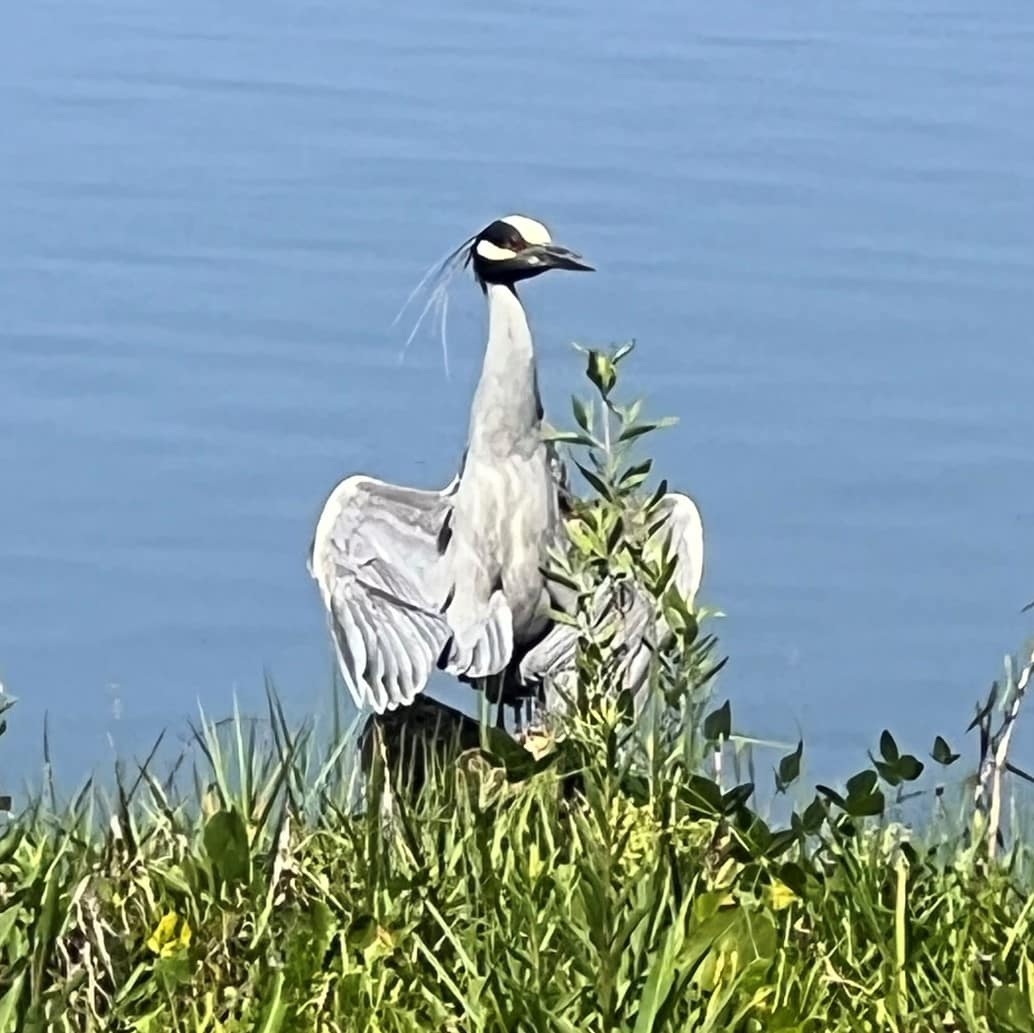Lots of animals, besides humans, sunbathe. In reality, humans are not that good at it, often causing more harm than good. But most birders and birdwatchers have seen birds sunbathe, often taking on a Zen-like posture – wings spread to the side, facing the sun, apparently napping as they stand or lie motionless. More than 50 common birds are known to sunbathe. John James Audubon was one of the first to describe this behavior back in 1831. But why?
As with many questions in nature, we have some compelling answers about the many kinds of birds that sunbathe in one form or another. Some lay on their sides, some spread eagle on the ground, and some, like the Great Blue Heron and Yellow-Crowned Night Heron I spotted recently, prefer the Zen posture. You can almost imagine them humming or chanting if you want to anthropomorphize.

The most obvious theory for sunbathing is for a bird to warm up during cold weather. On cold winter mornings, I often spot Northern Mockingbirds perched at the ends of branches, facing the morning sun, looking large as they fluff up their feathers. But birds sunbathe throughout the year, for other reasons.
Double-Crested Cormorants are often spotted in their Zen posture on pilings or snags after spending time diving for food. This behavior is an opportunity to dry off, but also a time to let their oil glands replenish the oils that keep their feathers from getting too wet. By facing the sun, especially in warmer weather, the oils flow more readily. They often follow their motionless periods with active preening to spread the oils through their feathers.
But some of the most interesting research about sunbathing in birds suggests that it helps birds rid themselves of parasites. It turns out that many of the common bird feather parasites, like bird lice, are killed or dislodged while the bird faces the sun, with its wings spread to maximize exposure to sunlight. Evidence suggests that sun exposure can kill directly. The heat of the sun also makes parasites loosen their hold and move about, seeking relief, making them more vulnerable to the preening actions of their host.
The combined effects of heating the oils that are more easily spread, and killing or getting parasites to move, explains the significance and utility of this behavior in birds. There is also some suggestion that exposure of the bird’s skin may help with the production of vitamin D, as with humans. So, sunbathing birds are indeed up to something that makes more sense than what we humans may think. They may yet be humming, even in their heads, but that is not the main reason for their action.
Now, if sunbathing only worked the same for us, right?
Hope to see you in our great outdoors!